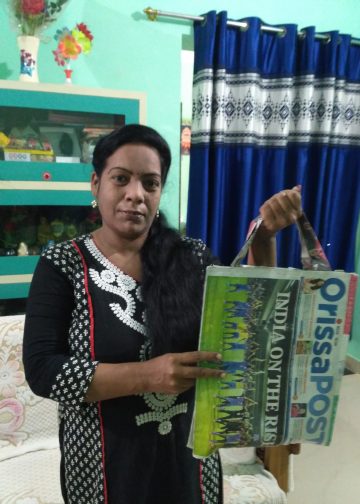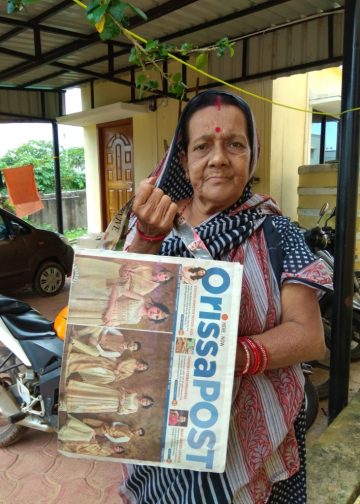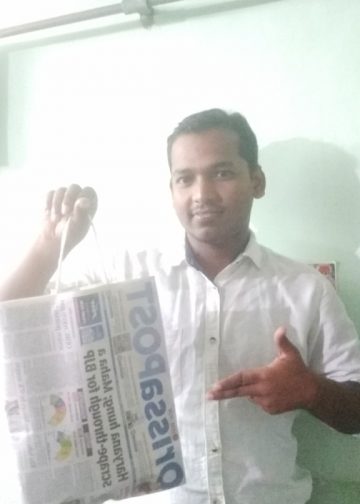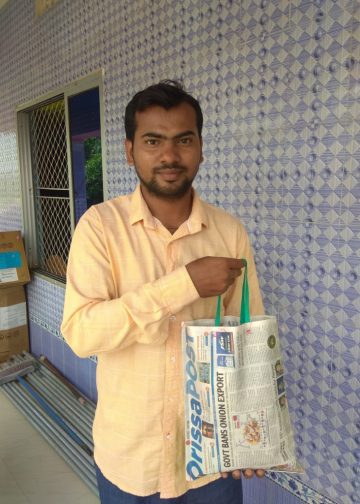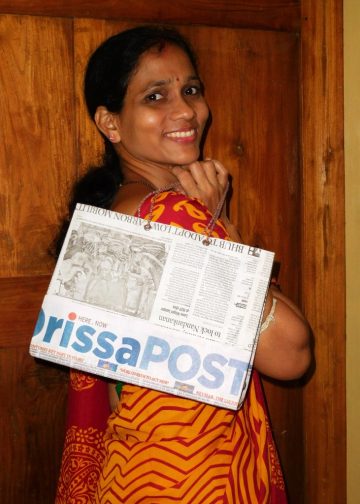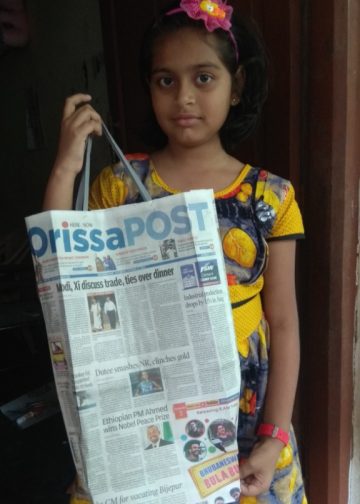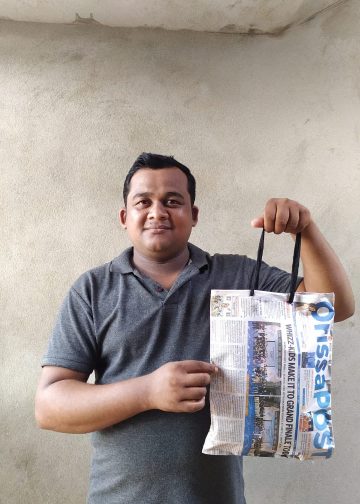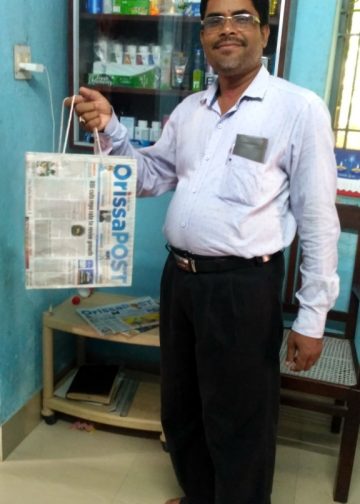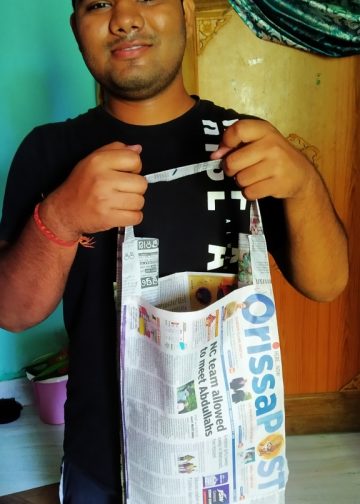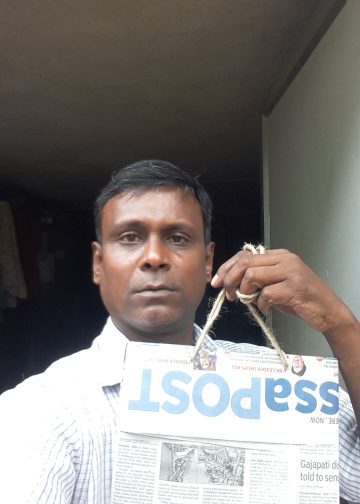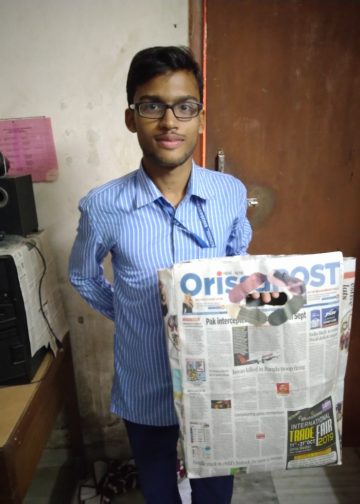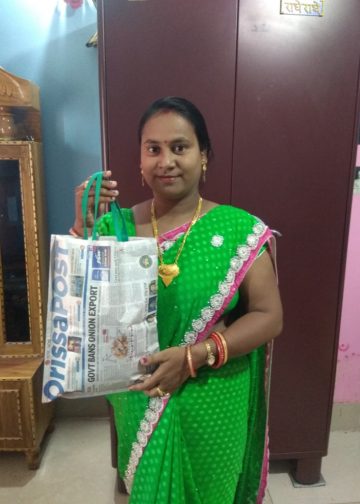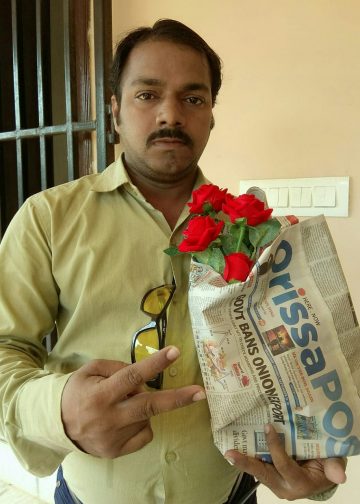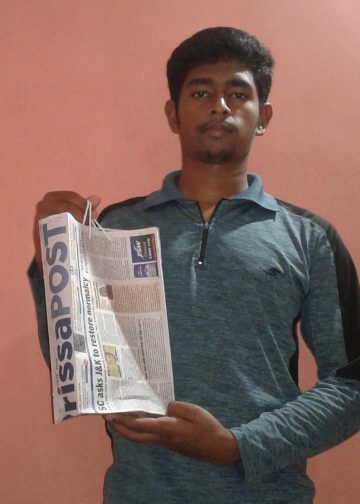Pragati Prava
At a crucial juncture in Indian history when loot, plunder, desecration of places of worship and religious intolerance reigned supreme, certain secluded nooks in Orissa doubled as temporary sanctuaries for the presiding deities – safe hideouts located in inconspicuous regions far away from the ostentatious dwellings of the gods that were the targets of persistent attacks. Rathipur is one such sleepy village which is steeped in religious significance…
Rathipur, a sleepy village under Jatni block in Khurda district, was the abode of Sakshi Gopal (an earthly form of Lord Krishna) centuries ago. Steeped in spirituality, the holy village, it is widely believed, was the place where the Lord of the Universe descended in human form to create a deep and divine bond with His devotees.
The village, situated around 7 km from Jatni block headquarters and 5 km from Khurda Road railway station, harks back to the medieval age during the period of Mughal rule when Hindu deities and temples existed under the constant threat of loot, plunder and destruction. The Madala Panji describes how Hindu deities were shifted several times from one place to another during the period between the 16th and 18th centuries. Rathipur was where Sakshi Gopal was safely kept for a few decades away from the glare of the attackers. Although this much is historically accurate, devotees believe that the Lord played divine pranks in order to give company to the rulers of Kalinga at a time when they were at the receiving end of Mughal attacks, with the plunderers desecrating scared places of worship.
According to Dibyasingha Chamupati’s Rathipur-Katak, Subedar Khan-e-Douran occupied Khurda fort, February 20, 1661. The then king Gajapati Mukunda Deva had no option but to surrender. Insulted, he quit the place and moved to Rathipurgada with his beloved deity Sakshi Gopal. In 1663, a temple was built for the deity at Rathipur.
SACRED REFUGE
According to Trilochan Mohapatra, a scholar and native of Rathipur, “The temple is a representation of the Marada style – a marvelous showpiece of Kalinga architecture. Interestingly, all the temples which served as hideouts for Lord Sakshi Gopal were built according to the Marada style. As the rulers were in no position to fight the Muslim invaders, plans were made to shift the deities to safe places. The temples were the refuge of the deities at a time when the Kalinga-styled temples were the principal targets of the invaders.”
The 28-ft high temple at the southern end of the village has a ‘garbhagriha’ (sanctum sanctorum), ‘bhoga mandap’ and ‘jagamohan’. The laterite stone structure also houses ‘nabagraha’ (nine planets) idols in front of the ‘jagamohan’ on the eastern flank of the temple door. The temple has doors on four sides of the ‘jagamohan’. Currently, the throne is empty and the altars of the ‘parsva devatas’ (side deities) are empty too.
DIVINE SPORTS
The Lord with Goddess Radha and the ‘parsva devatas’ (side deities) used to be taken for a ceremonial bath and divine water sports to a lake named Govinda Sagar, 1000 metres off the shrine. The three-acre lake, also known as Chandan Pokhari, was the site of the ritualistic water sports of the deities performed as part of Chandan Yatra, one of the most important festivals observed at that time. In the south-west corner of the pond, the huge altar known as Chandan Mandap bears testimony to this religious tradition.
QUEEN’S BATHTUB
Rani Majana Pokhari towards the east of the East Coast Railway tracks along the rim of the village was used by the queen for bathing and royal water sports. The pond was situated close to the queen’s palace (‘ranihansapura’) which has now been reduced to a heap of stones and is difficult to locate.
Mohapatra said, “There was a tunnel which used to connect the royal palace with the Majana Pokhari. The queen and her attendants would use the tunnel to reach the pond. The existence of the tunnel was evident even when I was a child. Today, however, it has disappeared, with a few unscrupulous elements digging out the stones to use them for commercial purposes.”
ANCIENT PONDS
Dari Pokhari is 100 metres away from Govinda Sagar. In the medieval age, the 2.5 acre pond at Kantia mouza in Rathipur was attached to a large house, where the king’s concubine (locally called ‘dari’) used to stay. Although her palatial house is no longer visible, the pond still stands at the spot.
Ketaki Chua was a pond dug up and used by Ketaki Devi, one of the kept women of king Dibyasingha Deva. The Mandira Kua (temple well), which is close to the Sakshi Gopal temple, lies in a dilapidated state today. Temple priests once used the water from the well for daily worship of the Lord.
SHODDY UPKEEP
Rathipur, the former capital of Utkal, is dotted with a number of historical monuments and structures like the Chandi temple, Balunkeswar temple and Parvati temple, said Kushnamohan Pattanayak, a resident. “The historical significance of the temples will be brought to sharp relief if the government declares the place as a tourist spot and takes steps to renovate the age-old structures,” added the retired superintendent of GA Department.
According to Bijaya Kumar Mohapatra, another native of Rathipur, “In 2013-14, the state archaeology department had taken measures to renovate the centuries-old temple. However, it left the work halfway having accomplished only a little repairing work on the upper part of the temple. The renovations left a lot to be desired with the repaired portions developing cracks soon after. Later, the villagers took up renovation work for which they collected donations. Every household in the village contributed for the purpose. We have planned to set up a brass idol of Lord Gopal in the temple and observe different festivals.”
HISTORICAL GLIMPSES
Delving into the history of the idol of Sakshi Gopal, Surendra Kumar Mishra, research officer with Sri Jagannath Sanskrit University in Puri, said: “Gajapati Purushottam Deva, who ascended the throne in 1467, defeated Kanchi ruler Salwa Narasingha Deva and occupied Chandragiri fort in 1489. Apart from Kanchi princess Padmavati, whom he married later, and an idol of Kanchi Ganesh, who is now worshipped at the Paschima Dwara of Srimandir, Purushottam Deva brought with him the stone idol of Sakshi Gopal, which was in a state of confinement inside an ‘amuhan deula’ (temple without door) in Kanchi. He established the idol on Srimandir premises the same year.”
Mohapatra said that it is believed that Purushottam Deva had a divine vision in his dream that urged him to shift the idol from Srimandir. In his dream, Lord Sakshi Gopal expressed unwillingness to reside at Srimandir. The Lord being in the form of ‘prastara murti’ (stone idol) was unwilling to coexist with ‘daru dian’ (Lord Jagannath and His siblings who are installed as wooden idols). Like any human being, the Lord expressed His preference for ‘nisankhudi bhoga’ – uncooked food like fruits, milk, honey, ghee and sweetmeats. He maintained that he could not live on ‘sankhudi bhoga’ (cooked food) as offered to Lord Jagannath at Srimandir.”
According to the Madala Panji, Purushottam Deva built a temple on Barabati fort premises in Cuttack and established the Lord’s idol there. Before Kalapahada attacked Cuttack in 1568, devotees, following Ramachandra Deva-I’s directions, constructed a Marada-style temple near Barunei hills and the Lord was shifted there. Ramachandra is credited with commissioning the construction of Khurda fort.
To protect the deity from attacks, Sakshi Gopal was again relocated to Rathipur Gada. Mughal Subedar Taqui Khan invaded Rathipur temple, January 3, 1732, when the idol was relocated to Kantolabai Gada. Sakshi Gopal finished His journey on ‘Baishakha shukla panchami tithi’ in 1848, when He graced the temple at Phulaalasha in Satyabadi of Puri district. The temple at Satyabadi was established thanks to the efforts of the Maratha sage Laxminarayana Brahmachari.
LOST SPLENDOUR
“The Gopala temple at Khurda Gada along the National Highway is over 500 years old. It was established by king Ramachandra Deva in 1568 to protect the deity from attacks launched by Mughal subedars on Barabati fort. Even Lord Jagannath’s ‘daru murti’ was kept protected in the temple thrice. While the Mughals destroyed at least 50 Hindu shrines in Barabati, they failed to flatten even one in Khurda,” said Gopal Krushna Das, lecturer at PN College, Khurda. Due to lack of maintenance and requisite attention, the temple lost its lustre slowly and lies in a state of neglect today. NSS and Rover Scouts of PN College under the leadership of Das took a resolution in 1998 to renovate the temple. They collected the ancient stone pieces scattered around it, built a temporary throne and set up the Lord’s on it. Subsequently, the state archeological department came forward in 2000 to take up renovation work, Das said, adding that since 2011 Lord Jagannath is being worshipped in the temple. The temple lies in close proximity to the Kunja Bihari temple.
The temple at Kantolabai
Of all the shrines built to serve as the Lord’s refuge the one at Kantolabai near Chilika lake is, comparatively, in a better shape. Kumar Pradhan, a teacher, who has authored a book on the temple, said, “It was built by king Ramachandra Deva-III in 1732. It took a year for the king’s men to build the temple using laterite stones to protect the idol from Mughal attacker. The deity stayed in the three-layered temple till 1848, when he was shifted to Satyabadi.” The temple worn a dilapidated look after passage of centuries. Chakradhar Mishra, an executive of the Sakshi Gopal temple trust (Satyabadi), when came to know about the Lord’s temporary stay at Kantolabai, took steps for its renovation. People of the place also donated for the renovation work. Currently, the Lord is being worshipped in the temple and festivals like Jhulana Yatra are observed, he added.









